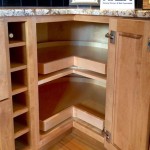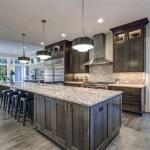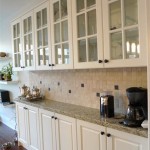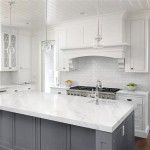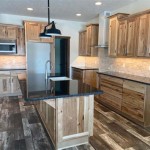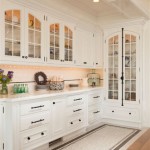Pictures of Kitchens With Tile Floors: A Comprehensive Guide
Tile flooring remains a popular choice for kitchens, offering a blend of durability, aesthetic versatility, and relatively easy maintenance. Examining pictures of kitchens with tile floors can be a valuable starting point for any homeowner considering this flooring option. This article will explore various aspects of tile flooring in kitchens, including different tile types, design considerations, and factors influencing the overall look and functionality of the space.
The visual impact of tile in a kitchen is undeniable. Tile can contribute significantly to the overall style, from classic and traditional to modern and minimalist. The sheer diversity of colors, patterns, sizes, and textures available makes tile a highly adaptable material. Furthermore, the arrangement of the tiles, whether in a simple grid pattern or a more intricate design, plays a crucial role in the final appearance of the kitchen.
Understanding Different Tile Types for Kitchens
Several tile types are commonly used in kitchen flooring, each possessing unique characteristics in terms of durability, cost, and aesthetic appeal. Selecting the appropriate tile type is paramount for ensuring long-term satisfaction and functionality.
Ceramic Tile: Ceramic tile is perhaps the most frequently chosen option due to its affordability and extensive design choices. It is made from clay that is fired at high temperatures. Ceramic tiles come in glazed and unglazed varieties. Glazed ceramic tiles are coated with a layer of liquid glass, which provides protection against stains and moisture. This makes them relatively easy to clean and maintain, an important consideration for a kitchen environment. Unglazed ceramic tiles, on the other hand, offer a more natural, rustic look, but they require sealing to prevent staining.
Porcelain Tile: Porcelain tile is a denser and more durable form of ceramic tile. It is fired at even higher temperatures, resulting in a tile that is less porous and more resistant to water absorption. This makes porcelain tile an excellent choice for kitchens where spills are common. Porcelain tiles are also more resistant to scratches and wear, ensuring a longer lifespan. They often come in a wider range of styles, including those that mimic natural stone or wood.
Natural Stone Tile: Natural stone tiles, such as granite, marble, slate, and travertine, offer a luxurious and unique aesthetic. Each tile possesses its own natural variations in color and pattern, adding character and visual interest to the kitchen floor. However, natural stone tiles are typically more expensive than ceramic or porcelain tiles. They also require more maintenance, including regular sealing to protect against staining and etching.
Quarry Tile: Quarry tile is a type of unglazed ceramic tile made from natural clay. It offers a rustic and durable flooring option. Quarry tiles are known for their slip-resistant surface, making them a suitable choice for kitchens where safety is a concern. They are also resistant to stains and water damage, although sealing is still recommended.
Vinyl Tile: While less durable than other types of tile, vinyl tile is a budget-friendly and relatively easy-to-install option for kitchen flooring. It comes in a wide variety of styles, including those that mimic the look of ceramic, porcelain, or stone tile. Vinyl tile is also water-resistant and comfortable underfoot.
Design Considerations for Kitchen Tile Flooring
The design of the kitchen tile floor should complement the overall style and layout of the kitchen. Factors such as color, pattern, size, and grout color can significantly impact the perceived size and feel of the space.
Color: The color of the tile floor can set the tone for the entire kitchen. Light-colored tiles can make a small kitchen feel larger and brighter, while dark-colored tiles can add warmth and sophistication. Neutral colors, such as beige, gray, and white, are versatile choices that can complement a variety of kitchen styles. Selecting colors that coordinate with the cabinets, countertops, and backsplash is crucial for creating a cohesive look.
Pattern: The pattern in which the tiles are laid can also affect the overall aesthetic of the kitchen. Simple grid patterns are classic and timeless, while more intricate patterns, such as herringbone or basketweave, can add visual interest. Diagonal patterns can make a narrow kitchen appear wider, while checkerboard patterns can add a touch of whimsy. Consider the size of the kitchen and the desired level of visual complexity when choosing a tile pattern.
Size: The size of the tile should be proportional to the size of the kitchen. Large-format tiles can make a small kitchen feel more spacious, while smaller tiles can add detail and texture. Using a combination of different tile sizes can create a more dynamic and visually appealing floor. Ensure that the subfloor is level and properly prepared before installing large-format tiles to prevent cracking or lippage.
Grout: Grout color is another important design consideration. Lighter grout colors can make the tiles appear larger, while darker grout colors can accentuate the tile pattern. Darker grout is also more resistant to staining. When choosing a grout color, consider the overall color scheme of the kitchen and the desired level of contrast. Epoxy grout is a more durable and stain-resistant option than cement-based grout, but it is also more expensive and difficult to install.
Tile Shape: Beyond the traditional square and rectangular tiles, other shapes such as hexagonal, octagonal, and even uniquely shaped mosaics are gaining popularity. These unconventional shapes add visual interest and can create a more modern and personalized kitchen design.
Factors Influencing the Look and Functionality
Beyond the tile itself, other factors contribute to the overall look and functionality of a kitchen with tile floors. These include lighting, cabinet design, countertop materials, and overall layout.
Lighting: Proper lighting is essential for showcasing the beauty of the tile floor and creating a functional kitchen space. Natural light can enhance the color and texture of the tiles, while artificial light can be used to highlight specific areas or features. Consider using a combination of ambient, task, and accent lighting to create a well-lit and visually appealing kitchen.
Cabinet Design: The style and color of the cabinets should complement the tile floor. For example, white cabinets can create a clean and modern look when paired with light-colored tile, while dark wood cabinets can add warmth and richness when paired with natural stone tile. The hardware on the cabinets should also coordinate with the overall design scheme.
Countertop Materials: The countertop material should complement the tile floor and create a cohesive look. Granite, quartz, and marble are popular choices for kitchen countertops, and they can be paired with a variety of tile styles. Consider the color, pattern, and texture of the countertop when choosing a tile floor.
Layout: The layout of the kitchen should be carefully considered when choosing a tile floor. In a large kitchen, consider using different tile patterns or colors to define different zones. In a small kitchen, avoid using too many different colors or patterns, as this can make the space feel cluttered. The placement of appliances, such as the stove and refrigerator, should also be taken into account when planning the tile floor.
Underfloor Heating: Many homeowners opt for underfloor heating beneath their tile floors. This adds a touch of luxury and comfort, particularly in colder climates. Radiant heat systems can be electric or hydronic and provide even heat distribution throughout the kitchen.
Transitions: Consider how the tile floor will transition to other flooring materials in adjacent rooms. Using transition strips or thresholds can create a smooth and seamless transition, preventing tripping hazards and protecting the edges of the tile.
Maintenance: While tile is generally easy to maintain, regular cleaning is essential for keeping the floor looking its best. Sweep or vacuum the floor regularly to remove dirt and debris. Use a damp mop with a mild detergent to clean the floor as needed. Avoid using harsh chemicals or abrasive cleaners, as these can damage the tile or grout. Sealing the grout on a regular basis can help prevent staining and water damage.
By carefully considering these factors, homeowners can create a kitchen with tile floors that is both beautiful and functional, enhancing the overall value and enjoyment of their home. Exploring pictures of kitchens with tile floors provides a valuable resource for inspiration and decision-making, guiding the selection of tile types, design choices, and complementary elements to achieve the desired aesthetic and functionality.

Ceramic Tile Kitchen Floor Pros Cons And Best Designs Stone

24 Best 𝐊𝐢𝐭𝐜𝐡𝐞𝐧 𝐅𝐥𝐨𝐨𝐫 𝐓𝐢𝐥𝐞𝐬 𝐃𝐞𝐬𝐢𝐠𝐧 Ideas Beautiful Images

45 Fantastic Kitchen Floor Ideas And Designs Renoguide N Renovation Inspiration

10 Kitchen Floor Tile Colours For Your Homes Beautiful

Top 5 Kitchen Layout Ideas And Tile Designs For Perfection

Kitchen Tile Floor Ideas

Ceramic Tile Kitchen Floor Pros Cons And Best Designs Stone
:max_bytes(150000):strip_icc()/small-kitchen-ideas-sophia-at-home-ce212a5ab80e4c53b6f8dccc9ae70b59-5ca6f96cd0cb40959d368be4c3708094.jpeg?strip=all)
30 Gorgeous Kitchen Floor Tile Ideas

17 Best Kitchen Floor Tile Ideas 2024 Small

21 Kitchen Floor Tiles Ideas Flooring Remodel Tile



